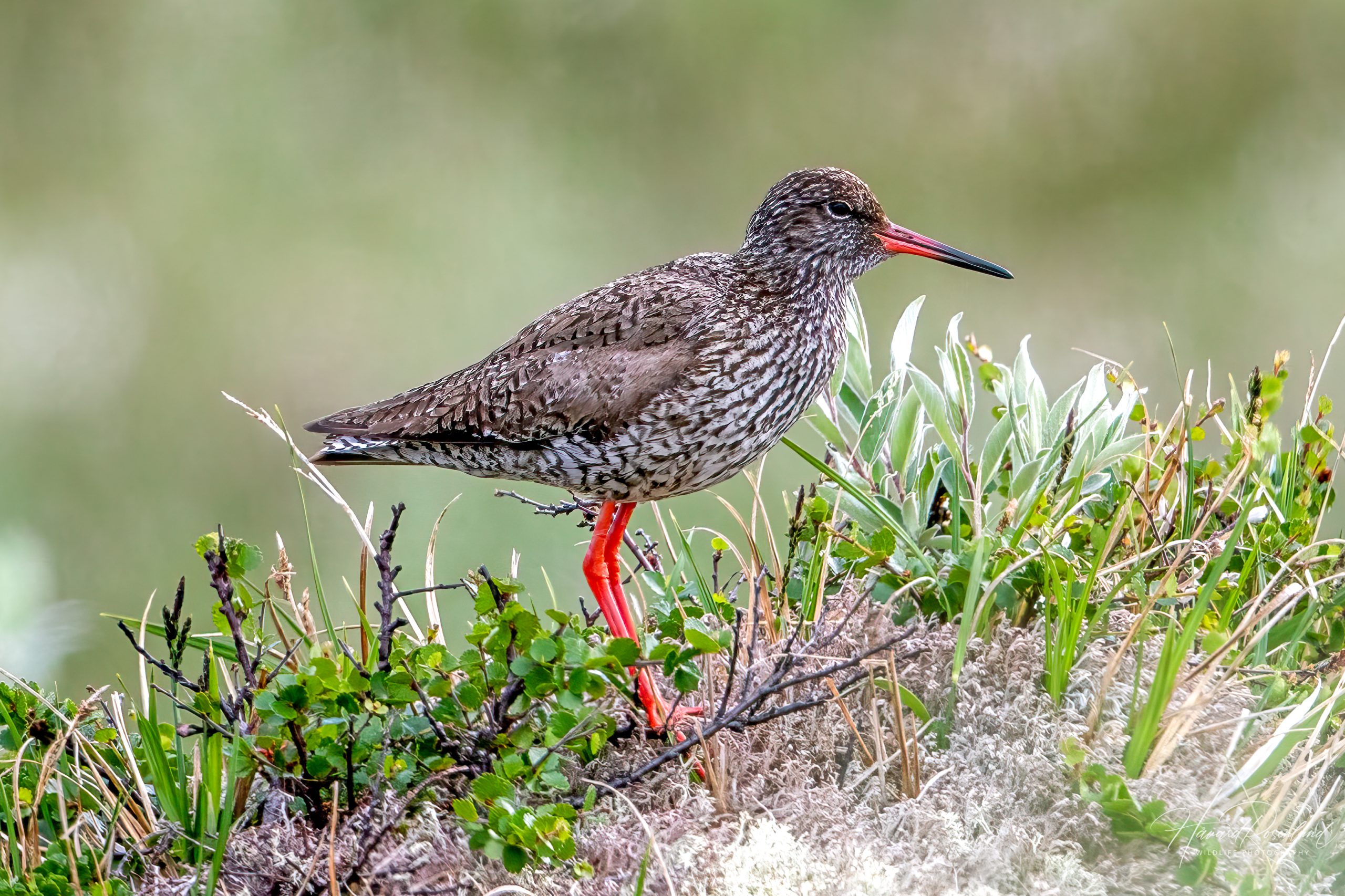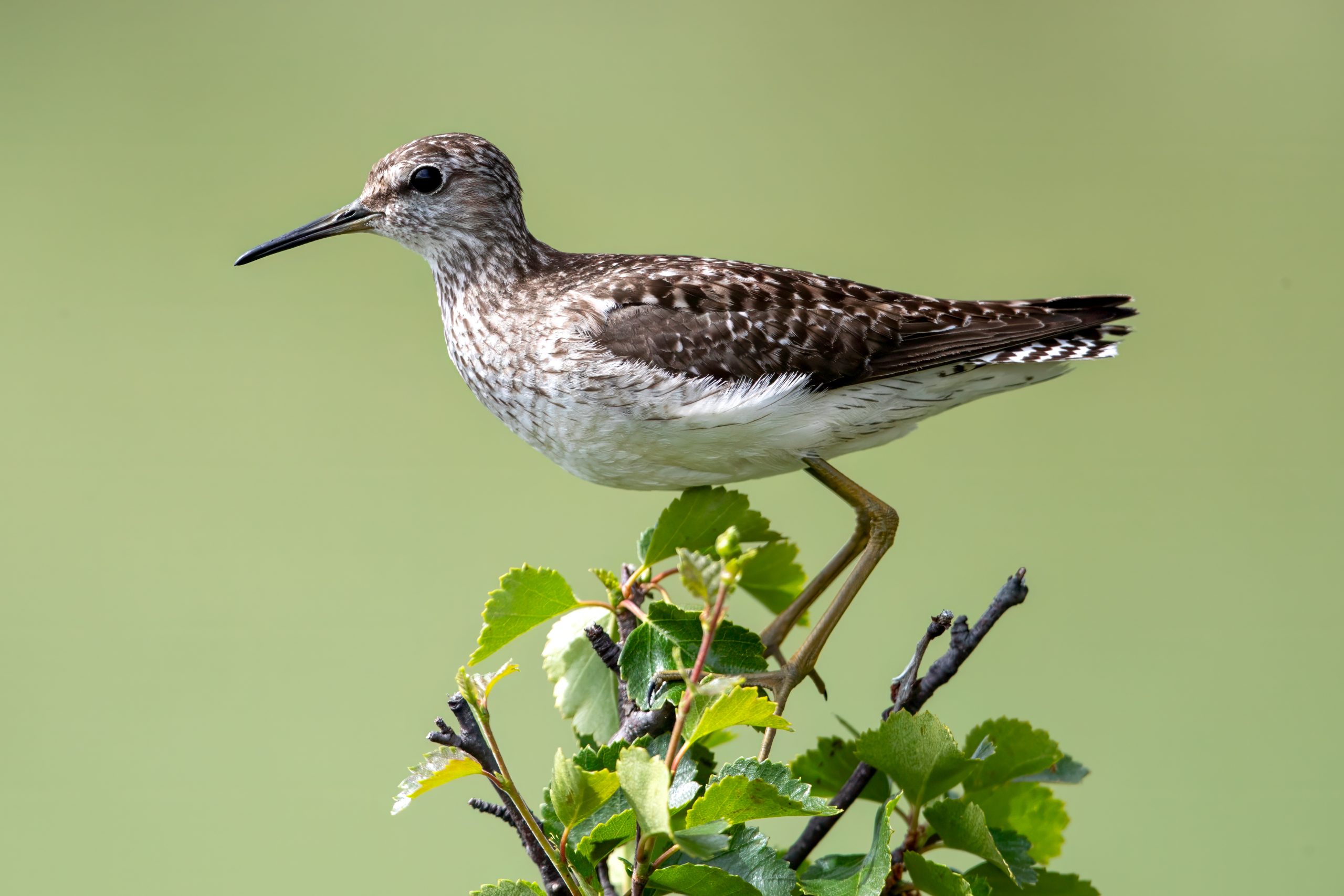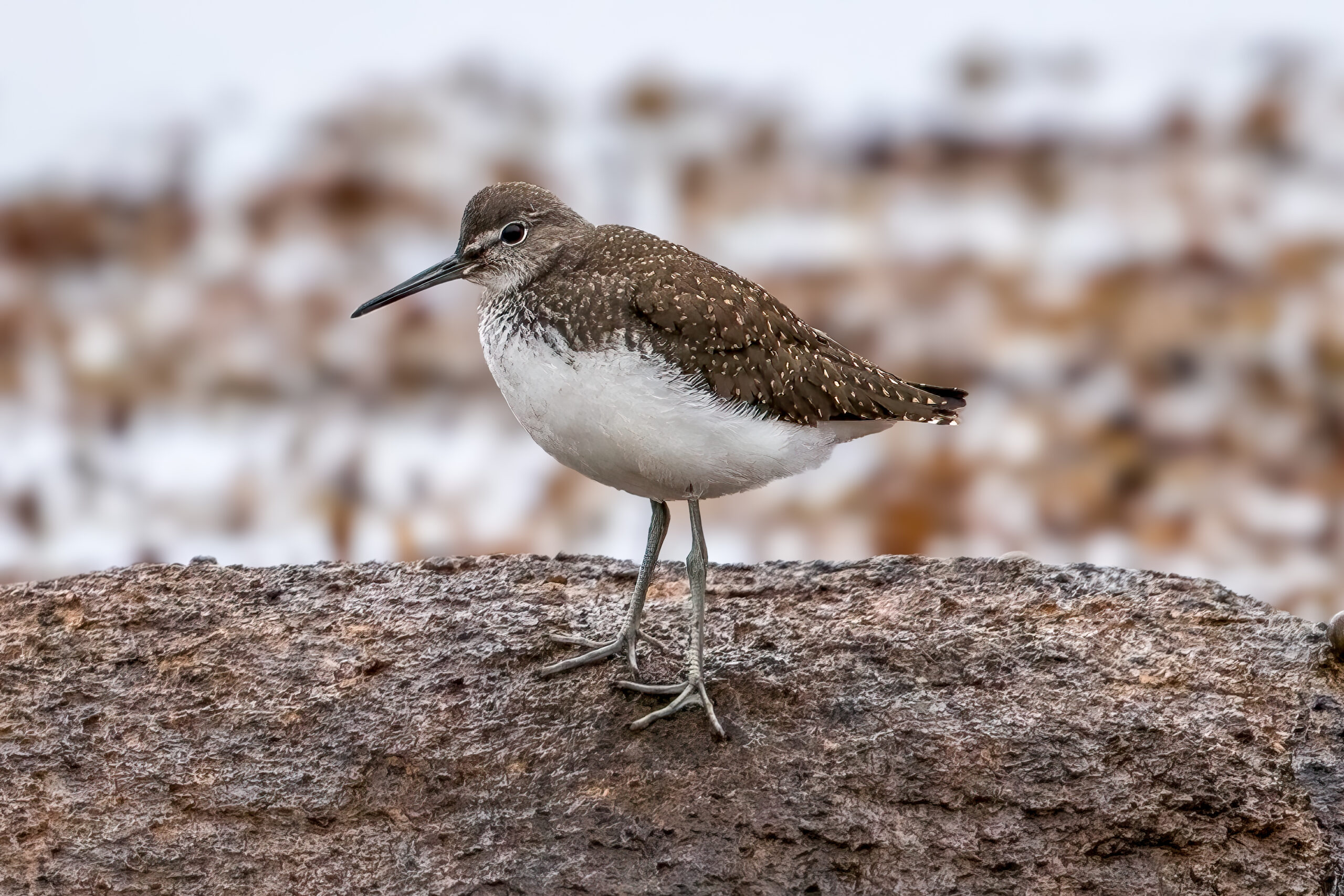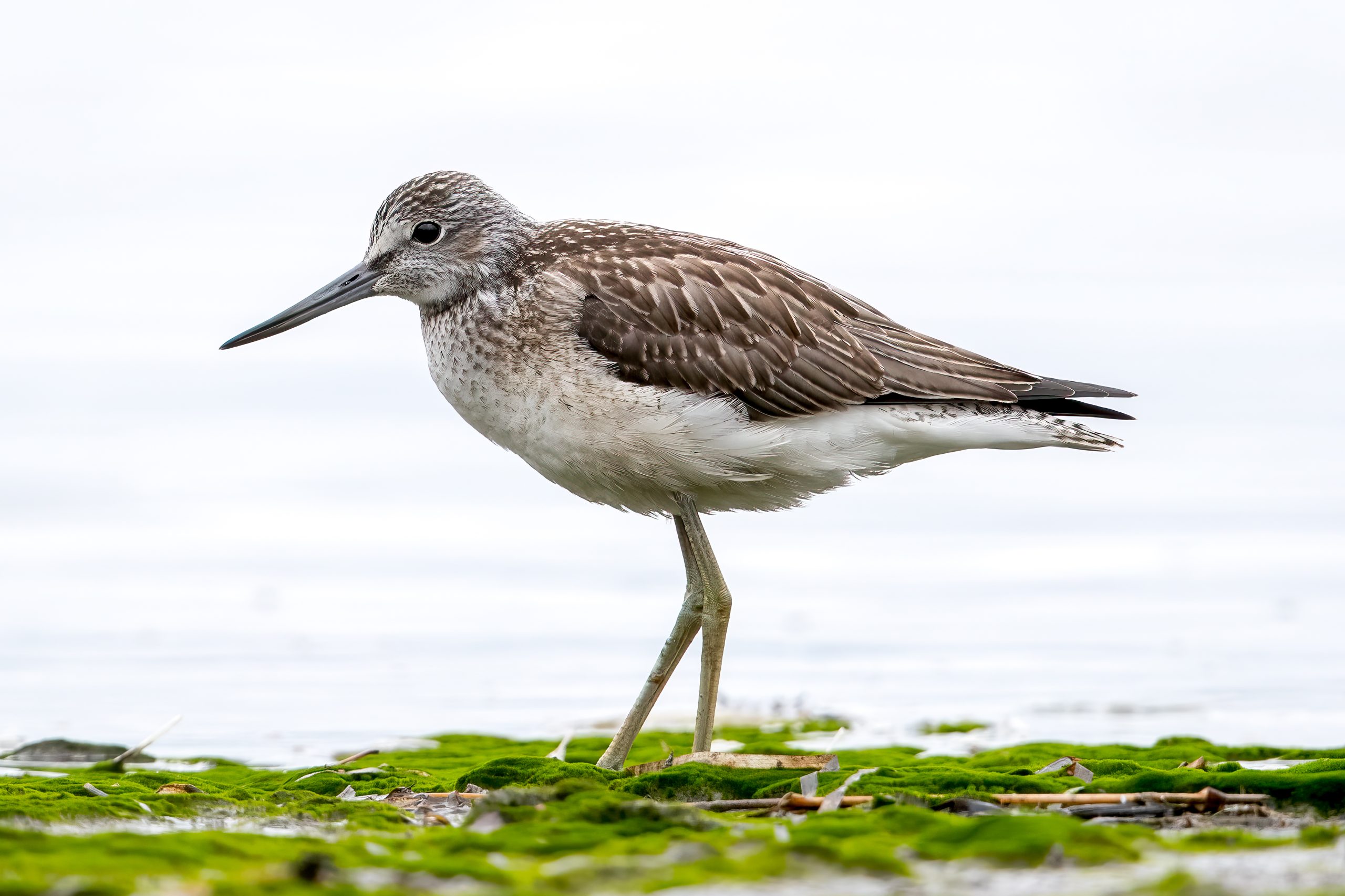Description
The common redshank (Tringa totanus) is a medium-sized wader that is widespread across Europe and Asia. It has a distinctive appearance characterized by its bright orange-red legs, from which it gets its name, as well as a red bill with a black tip. The bird has a brownish-grey plumage with darker mottling on the upper parts and a white rump. During the breeding season, its plumage becomes more marked with black streaks and spots. The redshank measures around 27-29 cm (10.6-11.4 in) in length, with a wingspan of 59-66 cm (23-26 in). It shares likeness with the spotted redshank (Tringa erythropus), which typically have longer, thinner legs, a more slender bill, and a more distinct supercilium outside of the breeding season. The two species look very different in breeding plumage, with the spotted redshank being almost entirely black.
Diet & habitat
Common redshanks inhabit a variety of wetlands, including estuaries, marshes, and mudflats. They prefer coastal regions but can also be found inland near lakes and rivers. These birds are opportunistic feeders, primarily eating invertebrates such as insects, mollusks, and crustaceans. They forage by probing the mud or shallow water with their bills, often seen wading through water in search of food. Their feeding behavior is quite active, often accompanied by a distinctive ‘teu-teu-teu’ call.
Migration
The common redshank is a migratory bird, with populations from northern regions migrating southwards during the winter months. They travel to southern Europe, Africa, and parts of southern Asia, with some even venturing as far as Australia. The migration typically begins in late summer and early autumn, with the birds returning to their breeding grounds in spring. Some populations, particularly those in milder climates, may be resident or only partially migratory.
Nesting
Breeding season for the common redshank begins in April and extends through July. Males perform an elaborate display flight, characterized by fluttering and singing, to attract females. This species prefer to nest in open grasslands, marshes, and coastal meadows. The nest is a simple scrape on the ground, often hidden in vegetation. Females lay 3-5 eggs, which are incubated for about 24-25 days by both parents. After hatching, the chicks are precocial and leave the nest within a few days to feed themselves, though they remain under parental guidance until they fledge at around 25-30 days old.
Status
The common redshank is currently listed as least concern by the IUCN, though some populations have experienced declines due to habitat loss and degradation. Wetland drainage, agricultural expansion, and pollution pose significant threats to their habitats. Conservation efforts are focused on protecting wetland areas and managing habitats to support breeding and feeding grounds.







